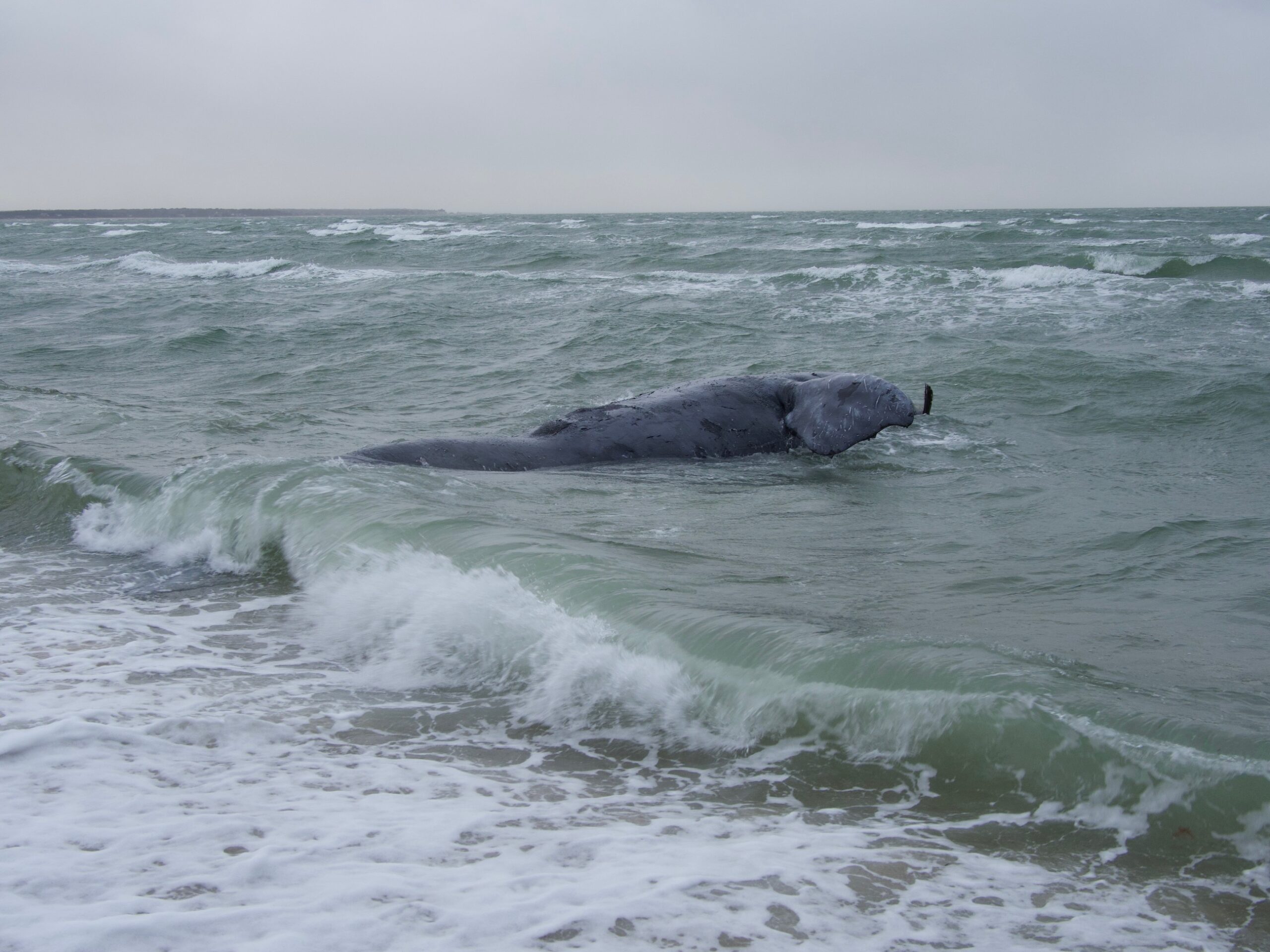Rescuers Search For 11 Fishermen Missing At Sea In South Africa
JOHANNESBURG, May 18 (Reuters) – Search and rescue efforts were underway in South Africa on Saturday to find 11 fishermen missing at sea after their vessel sunk off the coast of Cape...


The deceased female North Atlantic right whale near Joseph Sylvia State Beach on Martha's Vineyard, January 28, 2024. Credit: Woods Hole Oceanographic Institute/Michael Moore. Taken under NOAA Permit # 24359.
An investigation by the National Oceanic and Atmospheric Administration (NOAA) Fisheries has confirmed that rope recovered from a deceased female North Atlantic right whale is consistent with gear used in Maine’s trap/pot buoy lines. The whale, identified as #5120, was found off Martha’s Vineyard in late January 2024.
The young right whale, born during the 2021 calving season, was the only known calf of a right whale known as Squilla (#3720). She was first observed entangled in fishing gear off New Brunswick, Canada in August 2022, and despite numerous disentanglement attempts, her condition had significantly deteriorated by the time she was last spotted in June 2023.
Results from the necropsy are still being awaited, and the NOAA’s Office of Law Enforcement is continuing its investigation.
The death marks the 37th death since an Unusual Mortality Event was declared for North Atlantic right whales in 2017. The deaths have raised concerns as the North Atlantic right whales are nearing extinction with less than 360 individuals remaining, of which fewer than 70 are reproductively active females.
It latest death also highlights the ongoing threats to the species, primarily entanglement in fishing gear and vessel strikes, as part of the Unusual Mortality Event that has seen a total of 122 affected whales, with 37 dead, 34 seriously injured, and 51 in poor health.
Gib Brogan, campaign director at conservation group Oceana, reiterated the need for action, calling for Maine to take responsibility and implement measures to prevent entanglements.
“For more than half of its short life, this young whale suffered from rope embedded in its tail, causing a slow and needless death because our government was unable to enact proper protections to prevent entanglements,” said Brogan.
According to Dr. Francine Kershaw of the National Resources Defense Council, North Atlantic right whales in Maine waters navigate around 400,000 vertical buoy lines marking lobster and crab traps. Despite this, however, the Maine lobster industry denies responsibility for whale entanglements, with few entanglements traced back to Maine fisheries largely due to a lack of gear marking requirements in 70% of Maine’s waters.
Dr. Kershaw believes ropeless fishing systems can help eliminate entanglements. “With this new information on the origin of the rope entangling #5120 coming to light, we hope the Maine lobster fishery will begin to participate in good faith efforts to advance the commercial use of ropeless fishing gear,” she said.
Join the gCaptain Club for curated content, insider opinions, and vibrant community discussions.


Join the 107,180 members that receive our newsletter.
Have a news tip? Let us know.
Access exclusive insights, engage in vibrant discussions, and gain perspectives from our CEO.
Sign Up




Maritime and offshore news trusted by our 107,180 members delivered daily straight to your inbox.



Essential news coupled with the finest maritime content sourced from across the globe.
Sign Up